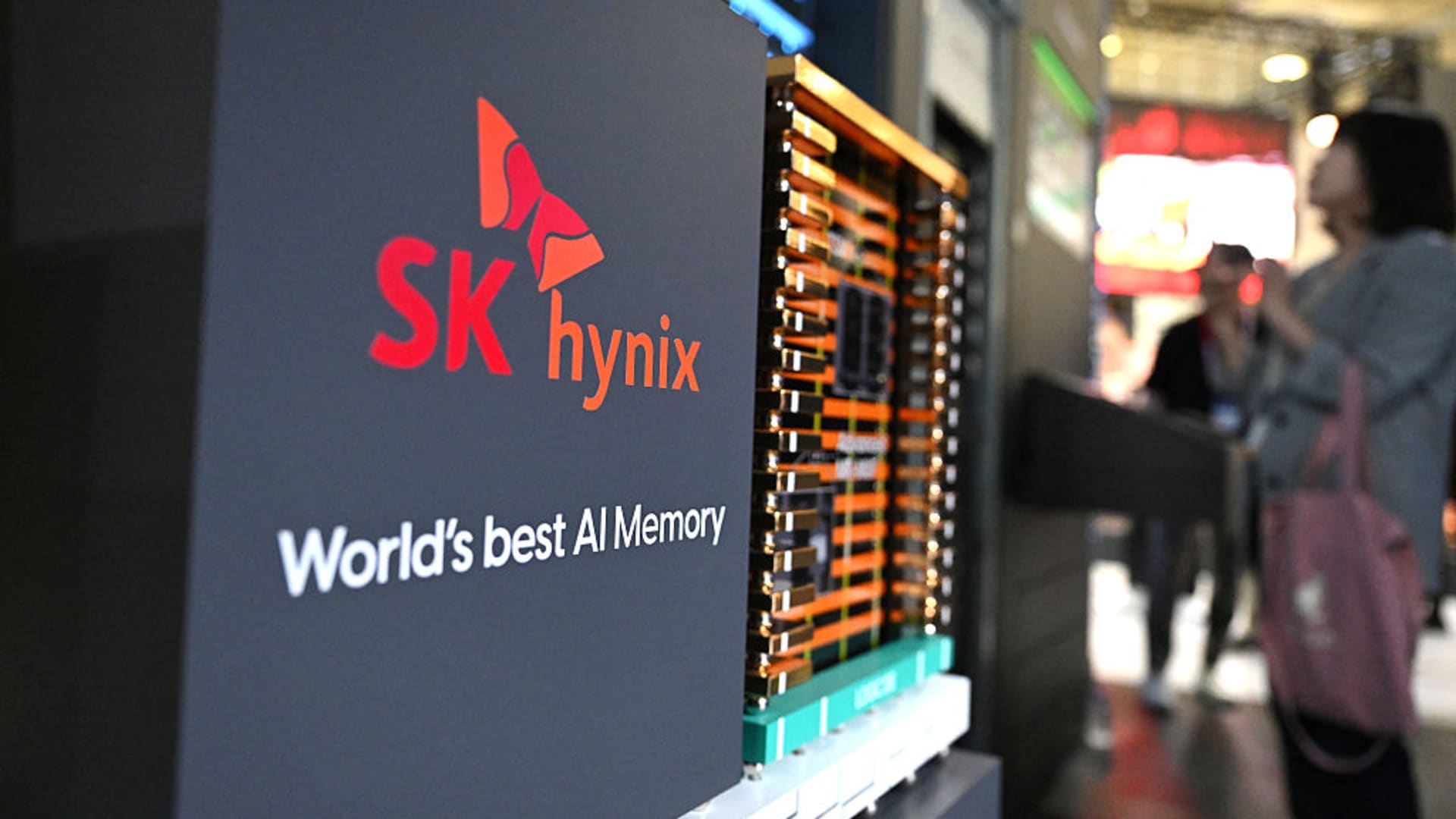Jung Yeon-je | Afp | Getty Images
The company is looking to expand production capacity in 2026, with its planned supply of memory products for 2026 already sold out.
Here are SK Hynix’s third-quarter results versus LSEG SmartEstimates, which are weighted toward forecasts from analysts who are more consistently accurate:
- Revenue: 24.45 trillion won ($17.13 billion) vs. 24.73 trillion won
- Operating profit: 11.38 trillion won vs. 11.39 trillion won
Revenue rose about 39% in the September quarter compared with the same period a year earlier, while operating profit surged 62%, year on year.
On a quarter-on-quarter basis, revenue was up 10%, while operating profit grew 24%. In its earnings release, the company noted that the quarterly operating profit had surpassed 10 trillion won for the first time.
Following the report, SK Hynix shares in South Korea popped 3.5%, boosting its stock rally to 210% this year.
SK Hynix makes memory chips that are used to store data and can be found in everything from servers to consumer devices such as smartphones and laptops.
The company has benefited from a boom in artificial intelligence as a key supplier of high-bandwidth memory or HBM chips used to power AI data center servers.
“As demand across the memory segment has soared due to customers’ expanding investments in AI infrastructure, SK Hynix once again surpassed the record-high performance of the previous quarter due to increased sales of high value-added products,” SK Hynix said in a statement.
HBM falls into the broader category of dynamic random access memory, or DRAM — a type of semiconductor memory used to store data and program code that can be found in PCs, workstations and servers.
The company said it will begin supplying its next-generation HBM4 chips in the current quarter, following negotiations with unspecified customers. The chips represent the sixth generation of HBM technology.
HBM leader
SK Hynix has set itself apart in the DRAM market by getting an early lead in HBM and establishing itself as the main supplier to the world’s leading AI chip designer, Nvidia.
However, its main competitors, U.S.-based Micron and South Korean-based tech giant Samsung, have been working to catch up in the space.
Micron has already supplied Nvidia with some of its HBM technology, while Samsung recently passed Nvidia’s qualification tests for an advanced HBM product, according to a local report last month.
“With the innovation of AI technology, the memory market has shifted to a new paradigm and demand has begun to spread to all product areas,” SK Hynix Chief Financial Officer Kim Woohyun said in the earnings release.
“We will continue to strengthen our AI memory leadership by responding to customer demand through market-leading products and differentiated technological capabilities,” he added.

The HBM market is expected to continue to boom over the next few years to around $43 billion by 2027, giving strong earnings leverage to memory manufacturers such as SK Hynix, MS Hwang, research director at Counterpoint Research, told CNBC.
“[F]or SK Hynix to continue generating profits, it’ll be important for the company to maintain and enhance its competitive edge,” he added.
A report from Counterpoint Research earlier this month showed that SK Hynix held a leading 38% share of the DRAM market by revenue in the second quarter of the year, increasing its shares after having overtaken Samsung in the first quarter.
The report added that the global HBM market grew 178% year over year in the second quarter, and SK Hynix dominated the space with a 64% share. Samsung will report its earnings on Thursday.
Ray Wang, research director for semiconductors, supply chain and emerging technology at Futurum Group, told CNBC that he expects SK Hynix to maintain its dominant leadership in the HBM market through next year, thanks to its technological edge.
“The company is likely to sustain around 60% global HBM market share, underpinned by its position as the primary supplier to key customers such as Nvidia, Google and other leading customers,” he added.















Leave a Reply